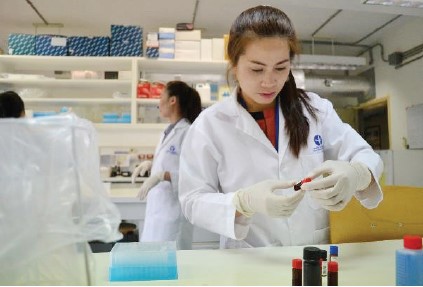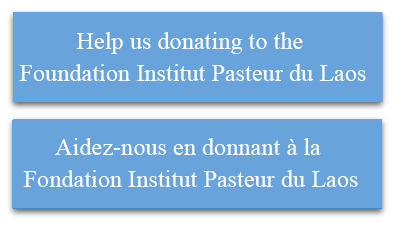Hepatitis B virus exposure, vaccination status and susceptibility in Healthcare Workers from Lao PDR
 Collaborations.
Collaborations.
Luxembourg Institute of Health.
Funding.
Ministry of Foreign and European Affairs, Luxembourg.
Luxembourg Institute of Health, Luxembourg.
Objectives.
Investigation of exposure, vaccination status and seroprotection against Hepatitis B virus in Lao Healthcare workers.
Background.
Hepatitis B virus (HBV) is a major global health concern that can cause chronic infection, cirrhosis, liver cancer and death. HBV is transmitted by exposure to infected blood or other body fluids such as semen and vaginal fluid during sexual intercourse, tattooing, unsafe medical practices and mother-to-child transmission.
The highest prevalence of infection occurs in the WHO Western Pacific Region with more than one-third of the HBV infection worldwide, including Lao PDR. Lao PDR is considered to have intermediate to high endemicity of HBV infection and the prevalence of HBsAg ranges from 5-10% and exposure rate (anti-HBc antibody positive) reaching up to 50% in blood donors and the general population.
To reduce the burden of HBV infection in the country, the HBV vaccine was introduced at 6, 10 and 14 weeks of age in 2001. Then, the birth dose within 24 hours was introduced to all newborns in 2004. In 2020, Lao PDR made striking progress in reducing HBV infection prevalence to under 1% in children under five years of age.
Healthcare workers (HCWs) are at risk of exposure to HBV and other infectious diseases that can be transmitted from blood and body fluids due to their occupational activities. HBV screening and vaccination before starting clinical practices are recommended by WHO as this can reduce the associated risk of disease transmission from and to patients.
A previous study in 2013 found that HBV exposure was similar in Lao HCWs to the general population, with low levels of seroprotection and low evidence of vaccination. A similar serological profile was found for Lao dentists, who also had low knowledge and inadequate safety practices. In 2019, the Lao Ministry of Health developed a strategic plan for combatting the transmission of viral hepatitis by agreeing to provide health education and hepatitis B vaccination to susceptible groups including HCWs.
Despite this agreement and international recommendations, HBV vaccination in HCWs in Lao PDR is not yet routine.
The aim of this research was to investigate the exposure, vaccination status and seroprotection against HBV in Lao HCWs from five provinces.
Methodology.
Sera collected for the investigation of anti-SARS-CoV-2 antibody prevalence in 2020 was used. In total, 666 participants aged 20 to 65 years were included. Serum samples were tested for HBV serology (vaccination/ exposure/ current infection). The study was approved by the Lao National Research Ethics Committee (ref#052/2020).
Results and discussion.
We found a moderate prevalence of HBsAg positivity among HCWs. We showed that HBV exposure (anti-HBc positive) increased significantly with age and a low percentage of the serological profile of vaccination. A higher serological profile of vaccination was seen in those 31- 49 years and this could be due to the age group having been vaccinated against HBV during their adult age, perhaps during an ad-hoc HBV vaccination campaign in their hospitals. Many of the participants with anti-HBc antibodies and anti-HBs antibodies may also have been vaccinated after infection, but there is no way to distinguish these from the HBV-exposed individuals without vaccination.
According to the findings of this study, hepatitis B prevalence is intermediate in HCWs in Lao PDR. Importantly, a high proportion of HCWs remains susceptible to infection, with insufficient levels of vaccination. Therefore, there is a need to strengthen the national vaccination program for pre-employment healthcare workers and mandatory pre-employment hepatitis B testing.






